In this period, the construction of a pyramid has become uneconomic. Pharaoh’s power over people largely depended on the confirmation of the clergy. Due to that fact, monumental cult temples for the Gods were built in large extent. Primarily the construction took place around Thebes, and temples were devoted to the supreme God – Amun.
Temple of the Queen Hatshepsut at Deir el Bahri
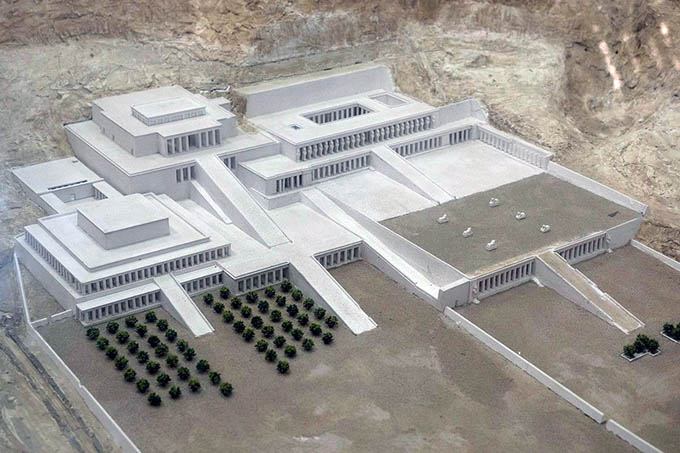


The Temple is work of Queen’s architect Senenmut, and it was built in the shape of three terraces, which climb in the form of stairs towards vertical rock. The rock rises in the back, giving the impression of the size. At the time of Hatshepsut reign in front of the first terrace were two artificial lakes surrounded by trees. The lakes were turned into ornamental ponds and park. The Temple was dedicated to the Gods Amun, Hathor, and Anubis, and to the mortuary cult of the Queen. Painted reliefs show her works; an expedition to the land of Punt, a transport of the two obelisks from Aswan to Thebes and her birth by Amun. The temple for a long time had been buried under the stones that collapsed on top of it, and it was excavated when stones were moved as well as the Coptic monastery that was built on top of it.
Complex in Karnak
The construction of the Temple lasted for years. The original buildings were built back in the Middle Kingdom. The temple was dedicated to Amun, while Egyptians called it Ipet-sut. First, Thutmose III built Hypostyle hall for the ritual celebration. Then Seti I continued, adding the great Hypostyle hall, which was completed by his son Ramses’ II. (52m x 103 m, 16 columns).
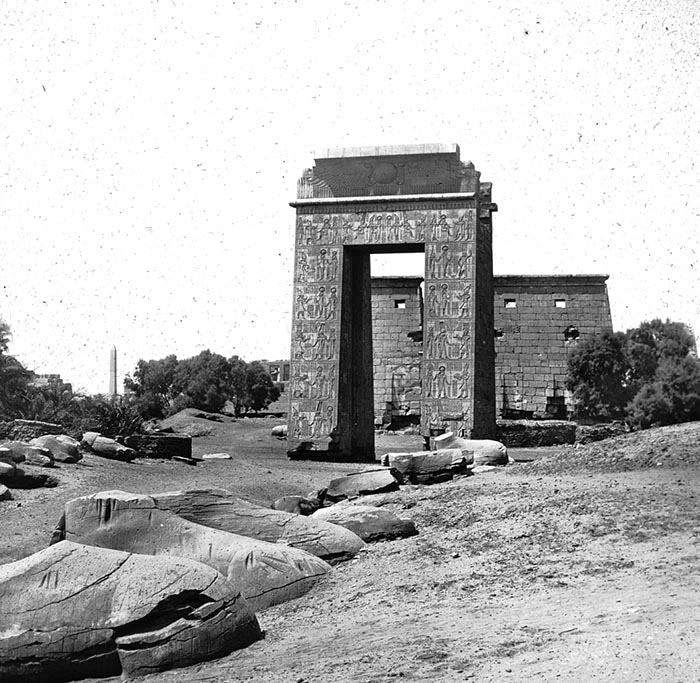


Each Pharaoh, which came later to the throne, added something to this complex. Thutmose I, Horemheb, Ramses III, Thutmose III, and Amenhotep III built Pylons, as well as other Pharaohs of the New Kingdom. Pylons are buildings in the shape of square, with high angled walls that stand in pairs marking the entrance in to the Temple. In the Ptolemaic period, there were already ten of them.
By constantly upgrading the building it gained the wall that surrounds it, as well as the sacred lake (next to the lake was a large scarab), a botanical garden and a passage, to a so-called Avenue of sphinxes with rams’ heads and several obelisks. An Avenue connected Complex Temple of the Mut and Ramses III. Behind the complex there was a small temple dedicated to the God Montu.
Luxor Complex
It is located near Karnak, and it was built during the reign of Amenhotep III and Ramses II. Temple of the inner sanctuary up to the outer edge was 260 m long. The local cult of the Amun was during the special ceremony associated with Amun of Karnak so the cult statue of Karnak Amun was moved to Luxor (Temple was called “Southern Ipet-sut“). Temples were connected through the Sphinxes Avenue, which was three kilometers long.
Pi Ramses or Ramses house was a Ramses II Palace, which was located to the north in the eastern delta of the Nile, but there are not many remains of that building.
About 1.000 year later, inside the Temple, into a small shrine it was placed holy barge in honor of Alexander the Great.
Complex in Abu Simbel
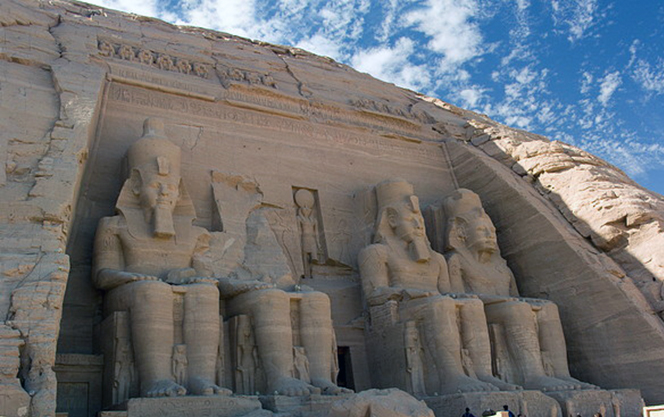


It consisted out of the Ramses II. Temple and his wife Nefertari Temple whose pyramid is nearby. Ramses II built the cave temple. In front of the Temple’s of Ramses entry sits four Ramses colossi. The Temple had a special orientation related to the Sun and at a certain time of the year, Sun’s rays would illuminate the four-seated statues inside the temple. One of these divines was Ramses. In the Temple can be seen different illustrations, for example, the famous battle of Kadesh. The Temple in the sixties of the 20th century was in great danger due to the raise of the Nile so the Temples of Abu Simbel 1968 were saved thanks to relocation. (Ramses Temple and a Temple dedicated to Hathor and Nefertari were relocated as well).
In the New Kingdom, burials of the pharaohs were carried out in the cave tombs in the Valley of the Kings (all the way from Tuthmosis I. to Ramses’ XI.). Cave tombs were also the shrine in honor of the pharaoh while iconic temples became places of worships of the certain divines.
The tombs in the Valley of the Kings always arouse the imagination, especially with their systems of defense against robbers; protective trenches, labyrinth halls, systems of levers, etc.
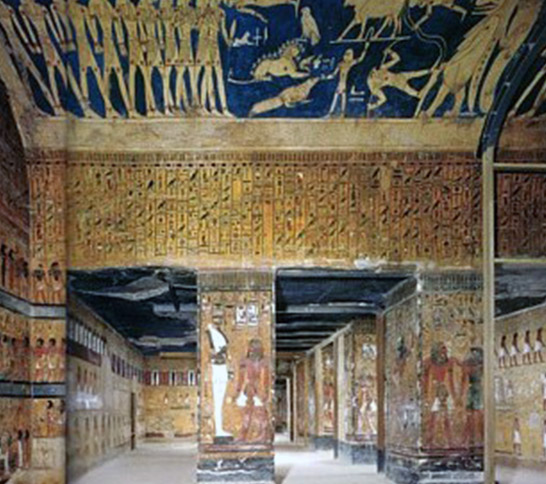


Many of them are still too dangerous to be open for the public. Tomb of Seti I is about 140 m long. At the bottom of the tomb, it is unknown where a passage corridor leads. One Egyptologist tried to get down using that corridor, but the secret of what he had discovered there he kept to his death. He said only “he now knows Hatshepsutin’s secret”. The largest so far discovered tomb is the mausoleum of Ramses II. He had it built for his family. The tomb has at least 110 rooms. Statuary has not changed its essential characteristics, but face surface are much finer, pharaohs had so called archaic smile, and the portrait features are coming to life. There were also cubic statues and portraits of scribers in sitting pose with the wrinkled belly. In the tombs of the nobles, scenes from the life of the deceased can be seen, such as hunting, fishing, agricultural work as well as crafts, players, dancers, lamentations, etc. Tombs of the Pharaohs have esoteric and astronomical illustrations. The most beautiful astronomical illustration is located in the tomb of Seti I.
Medinet Habu
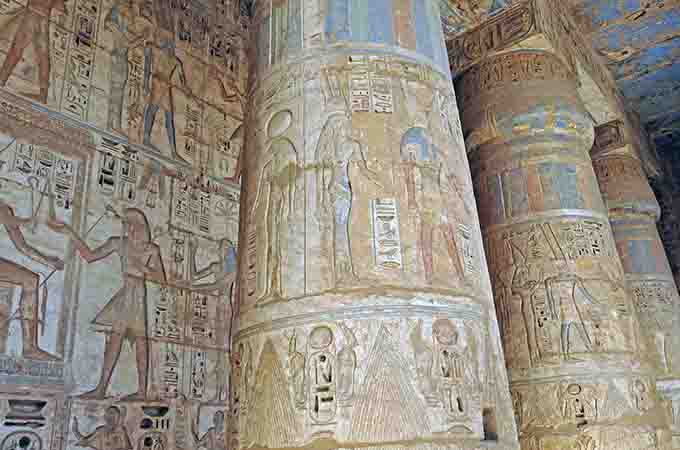


Position south of Thebes, on the left bank of the Nile, where according to tradition Amun appeared; it is the place of Mortuary Temple of Ramses III.
The remains of the ancient Egyptian buildings include:
- a small Temple surrounded by the pillars from the XVIII. Dynasty,
- as well as Mortuary Temple from the Saits Age,
- and the remains of the Amenofis III. Palace, etc.
High wall surrounds entire complex. There are large gate and projecting towers. Temple is made out of sandstone, which was dedicated to the God Amun as well as a huge palace with a throne room, harem houses … It stands out a monumental burial Temple of Ramses III., which was richly decorated with reliefs from the life of the Pharaoh (Ramses hunting lions).
